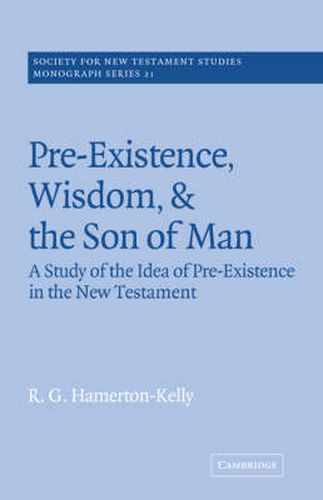Readings Newsletter
Become a Readings Member to make your shopping experience even easier.
Sign in or sign up for free!
You’re not far away from qualifying for FREE standard shipping within Australia
You’ve qualified for FREE standard shipping within Australia
The cart is loading…






The idea of pre-existence has a long history in early Jewish and Biblical traditions. Professor Hamerton-Kelly studies the various forms the idea takes in these traditions as they emerge in the New Testament. He pays special attention to the themes of Wisdom and the Son of Man, with detailed references to the relevant texts and sources. His conclusions are that there are two basic types of the idea of pre-existence in the New Testament - which he calls ‘protological’ and ‘eschatological’ respectively - and two entities which were chiefly understood in terms of these types - namely, Christ and the Church. This unusual book illuminates the process by which the early Church blended its Greek and Jewish heritages by analysing some of the conceptual patterns in the New Testament which anticipated that process. It will be of interest to New Testament scholars and historians of docrine.
$9.00 standard shipping within Australia
FREE standard shipping within Australia for orders over $100.00
Express & International shipping calculated at checkout
The idea of pre-existence has a long history in early Jewish and Biblical traditions. Professor Hamerton-Kelly studies the various forms the idea takes in these traditions as they emerge in the New Testament. He pays special attention to the themes of Wisdom and the Son of Man, with detailed references to the relevant texts and sources. His conclusions are that there are two basic types of the idea of pre-existence in the New Testament - which he calls ‘protological’ and ‘eschatological’ respectively - and two entities which were chiefly understood in terms of these types - namely, Christ and the Church. This unusual book illuminates the process by which the early Church blended its Greek and Jewish heritages by analysing some of the conceptual patterns in the New Testament which anticipated that process. It will be of interest to New Testament scholars and historians of docrine.